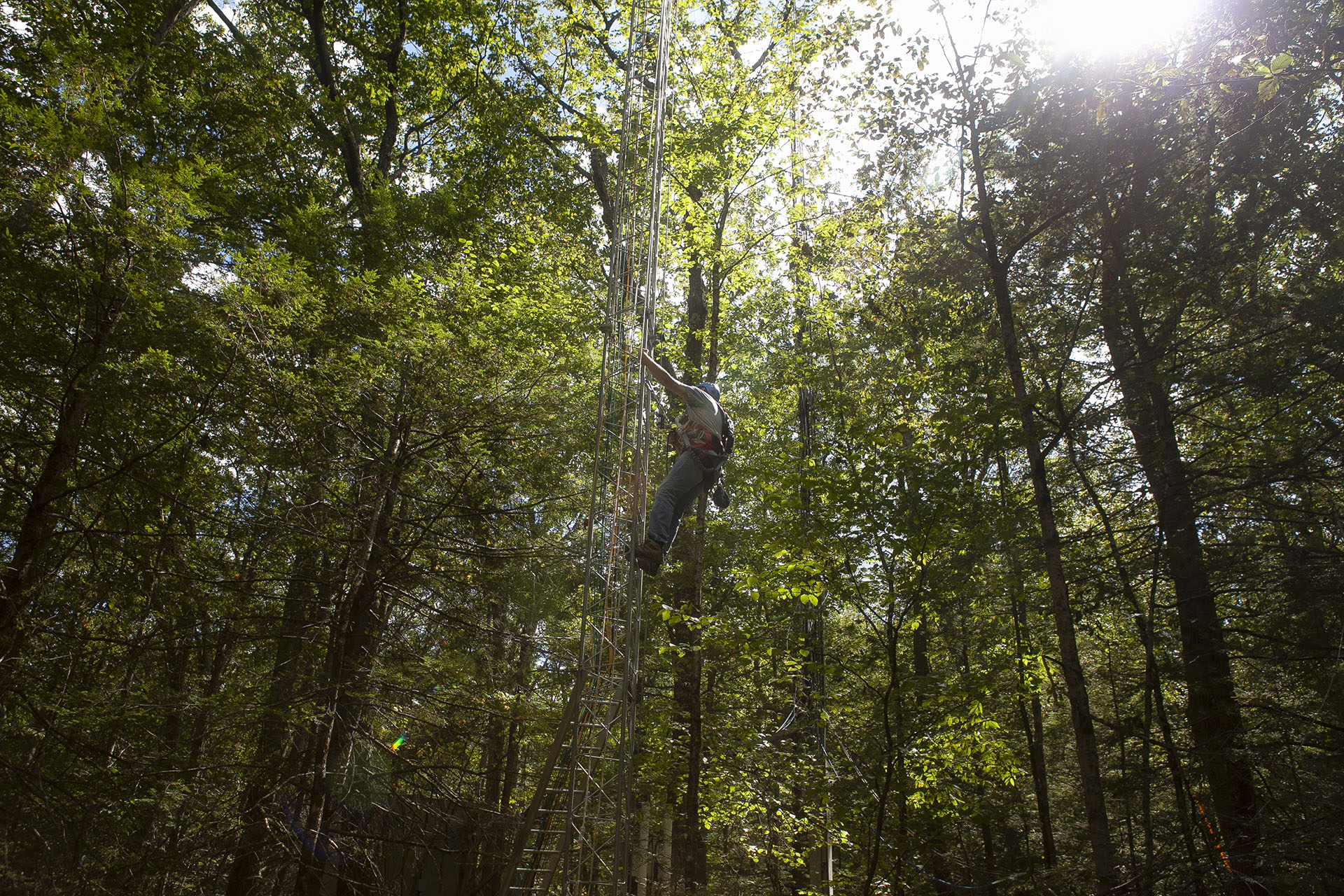
"You might call it the case of the missing carbon. It was the 1980s. Scientists knew roughly how much carbon dioxide (CO₂) was being emitted globally by humans burning fossil fuels and by natural processes such as volcanos. They also knew how much CO₂ was in the atmosphere. These data showed that about half of the fossil fuel CO₂ was disappearing each year. But where was it going?"
"He's been measuring ever since. Eight times a second, every minute, every day since October 1989, a 100-foot lattice tower poking above the canopy at Harvard Forest has been analyzing the carbon exchange. As tiny eddies of air shuttle gases up and down, an infrared spectrometer measures concentrations of CO₂ and water vapor, while a 3D sonic anemometer logs vertical and horizontal wind speed."
Scientists in the 1980s observed that about half of emitted fossil fuel CO₂ was unaccounted for in the atmosphere, prompting investigation into terrestrial sinks. Forests both absorb carbon via photosynthesis into wood and vegetation and release carbon through microbial respiration of soil and dead plant matter. Atmospheric chemist Steven Wofsy implemented continuous eddy-covariance measurements by sampling CO₂ in updrafts and downdrafts around the canopy. Since October 1989 a 100-foot tower at Harvard Forest has measured CO₂ and water vapor with an infrared spectrometer and wind with a 3D sonic anemometer, allowing covariance-based calculation of net carbon exchange, the eddy flux.
Read at Harvard Gazette
Unable to calculate read time
Collection
[
|
...
]